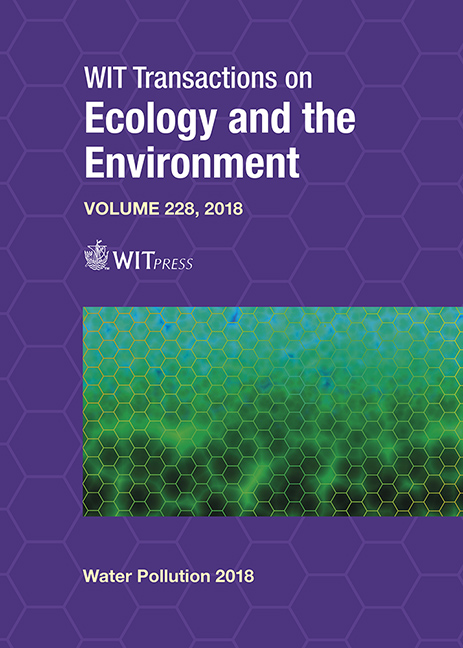ASSESSMENT OF SILVER METAL RELEASED INTO WASTEWATER AFTER USING A SILVER DEODORANT
Price
Free (open access)
Transaction
Volume
228
Pages
9
Page Range
121 - 129
Published
2018
Size
342 kb
Paper DOI
10.2495/WP180131
Copyright
WIT Press
Author(s)
LEBOGANG L. M. MODIKA, LUFUNO MATSHEKETSHEKE, JABULANI RAY GUMBO
Abstract
The purpose of the research was to assess availability of silver based deodorant and to assess the levels of nanosilver particles that are released into bathwater. A survey was conducted to assess the availability and affordability of silver based deodorants in Thohoyandou and Louis Trichardt. The survey studies showed that the silver based deodorants are available in commercial stores and pharmacies. The price range was from R16.99 to R25.00. Nivea silver protect deodorant was applied to the body. In Louis Trichardt town, the wastewater samples were collected just below the shower head (SH) and just before entry to sewer system (SS) and then filtered through a membrane filter (0.45 μm) and through a Whatman filter paper. The residue on the Whatman filter paper was then acid digested and then analyzed for silver content. Two analytical methods, atomic absorption spectroscopy (AAS) and inductively coupled plasma optical emission spectroscopy (ICP OES) were used for the analysis of the silver content. The AAS results showed that municipal water, bath water at SH and SS was zero and the Nivea silver protect deodorant was 0.5 ± 0.0 ppm. The ICP OES results showed that the silver content of the municipal water was <0.005 ppm and the Nivea silver protect deodorant was 0.3 ppm. The bath water at SH and SS, the ICP OES, showed that the silver content was <0.005 ppm. However the acid digested residue showed that the silver content was 0.01 ppm at 2 metres and <0.005 ppm for 0 metres. The ion chromatographic analysis indicated that the municipal water had trace levels of fluoride (F) ions, SH had 6.01 ppm of F, SS had 3.25 ppm of F and the soap A had 2.10 ppm of F. The retained residue was established to be silver trifluoride (AgF3) with the use X-ray diffraction technique. Thus, the silver nanoparticles are a potential hazard to the microbial community resident at municipal sewage treatment plant and aquatic ecosystem.
Keywords
wastewater, silver particles, environmental hazards, bath soap





